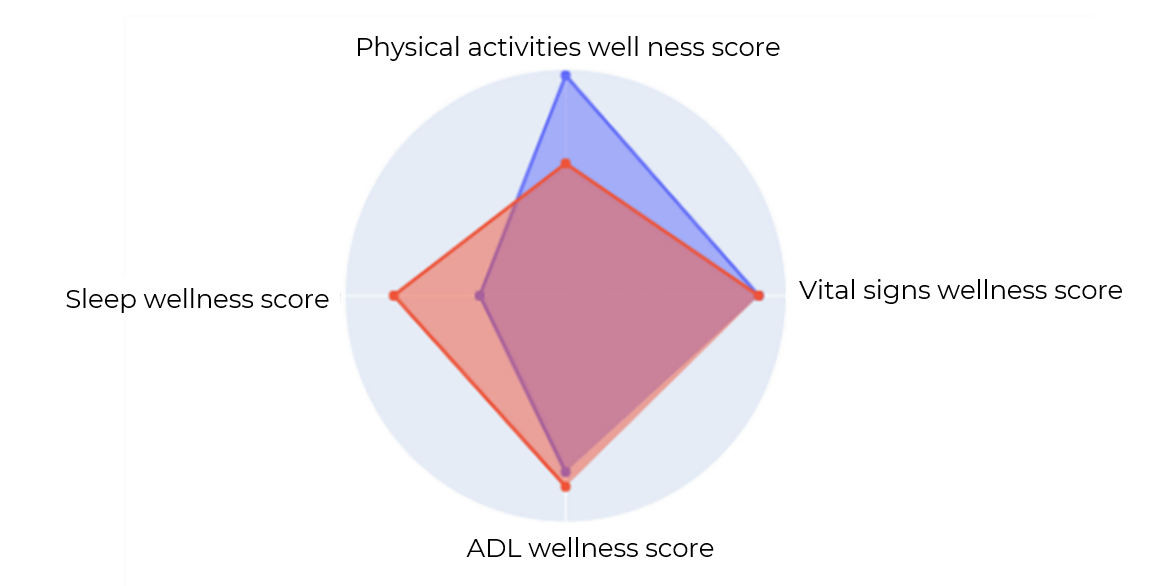New MiiWellness Score
Over the years, the concept of wellness has evolved across disciplines. The pursuit of wellness in older adults is motivated not only by the desire to increase their life expectancy or longevity but also to maintain their vitality and quality of life. The ability to remember daily tasks and to be physically active on a consistent basis is a crucial factor in physical well-being, but as we age, our ability to do daily tasks declines. As per 2020 NHS households survey, there were approximately 3.7 million adults aged 65 and over living alone in the United Kingdom. Surprisingly, cognitive impairment affects one out of every 14 people over the age of 65, and one out of every six people over the age of 80. Cognitive impairment negatively impacts the older adults' ability to maintain a healthy lifestyle and perform daily tasks. Hence, the need for continuous mental stimulation and prompting to maintain an adequate physical and mental fitness is crucial in aiding support a healthy greying population.
Most wellness scores in the health field are based on user data derived from questionnaires and apps. To assess physical well-being in older adults, the MiiWellness score combines rich data sources with statistical analysis. Caregivers can use the wellness score to get a quick snapshot of their loved one's physical health behaviour. It can also be useful to obtain overall metrics on the user's physical health behaviour to take appropriate action. For the past few months, the MiiCare data science team has been developing a physical wellness score that can quantify a user's physical health behaviour based on various physiological parameters. This wellness score was developed by examining various clinical studies and literature to determine the relationship between physical health and a person's physical well-being. We will continue to improve our score intelligence through further research and clinical studies.
The physical wellness score consists of four pillars: vital signs, sleep, physical activities, and ADL (Activities of Daily Living). Here is a graph that illustrates the wellness score of an older adult over a two-day period.
The graph can be read in such a way that each colour box in the middle represents a different day, and each edge is a pillar of the physical wellness score. The blue box represents the previous day's score, and the person is doing regular activities and vital signs are normal on both days. However, the older adult's physical activity has reduced, and their sleep has increased on the second day. If the older adult experiences a pattern of change in their physical wellness score, an alert will be raised. This alert will serve as a referencing point to investigate the shift and implement changes to help maintain health.
As we have seen, the MiiWellness score is a great way to monitor a person's overall physical well-being in a single metric, and by using the wellness score, better AI recommendations and insights will be provided to their caregivers, allowing Monica to better serve as their digital health coach.

